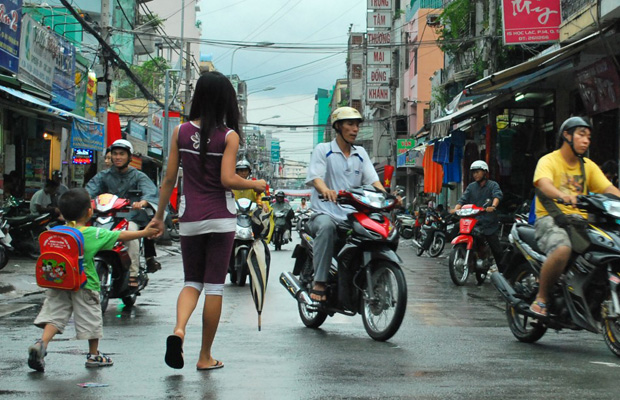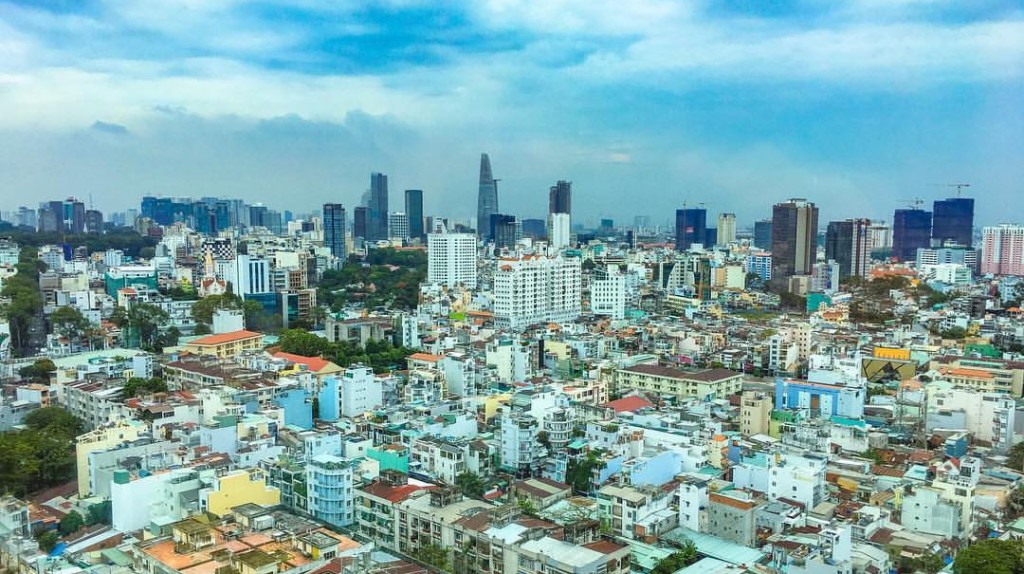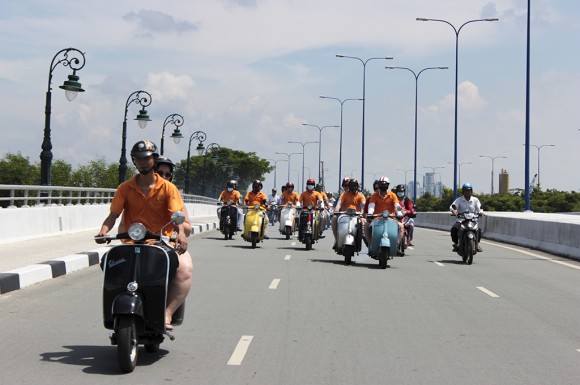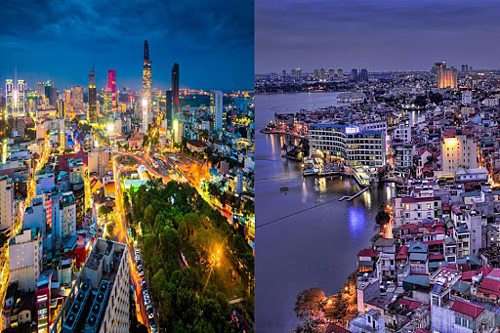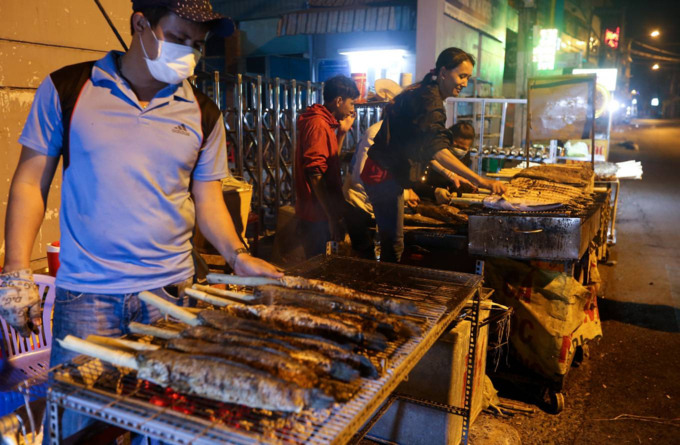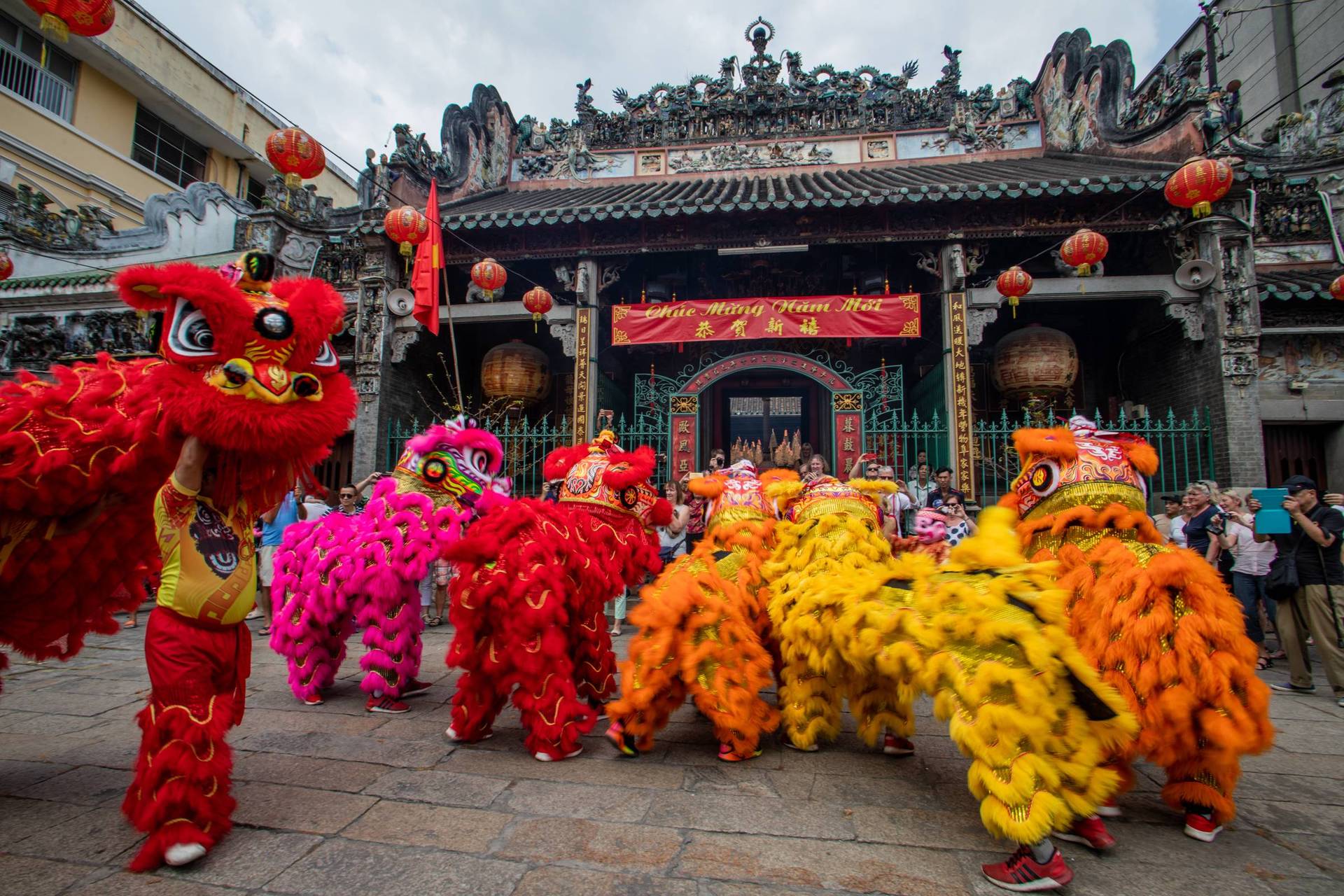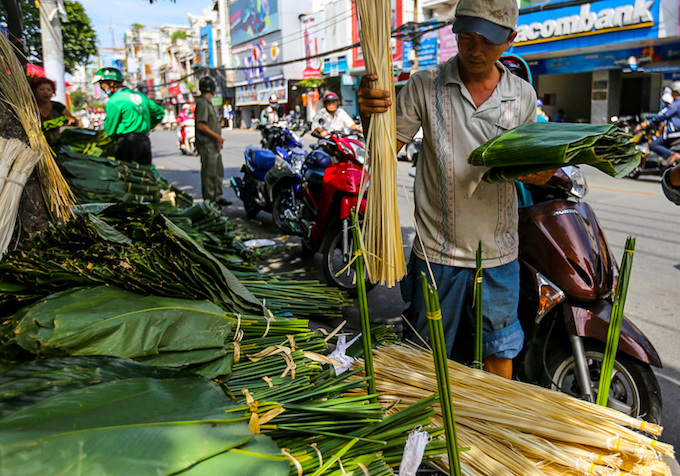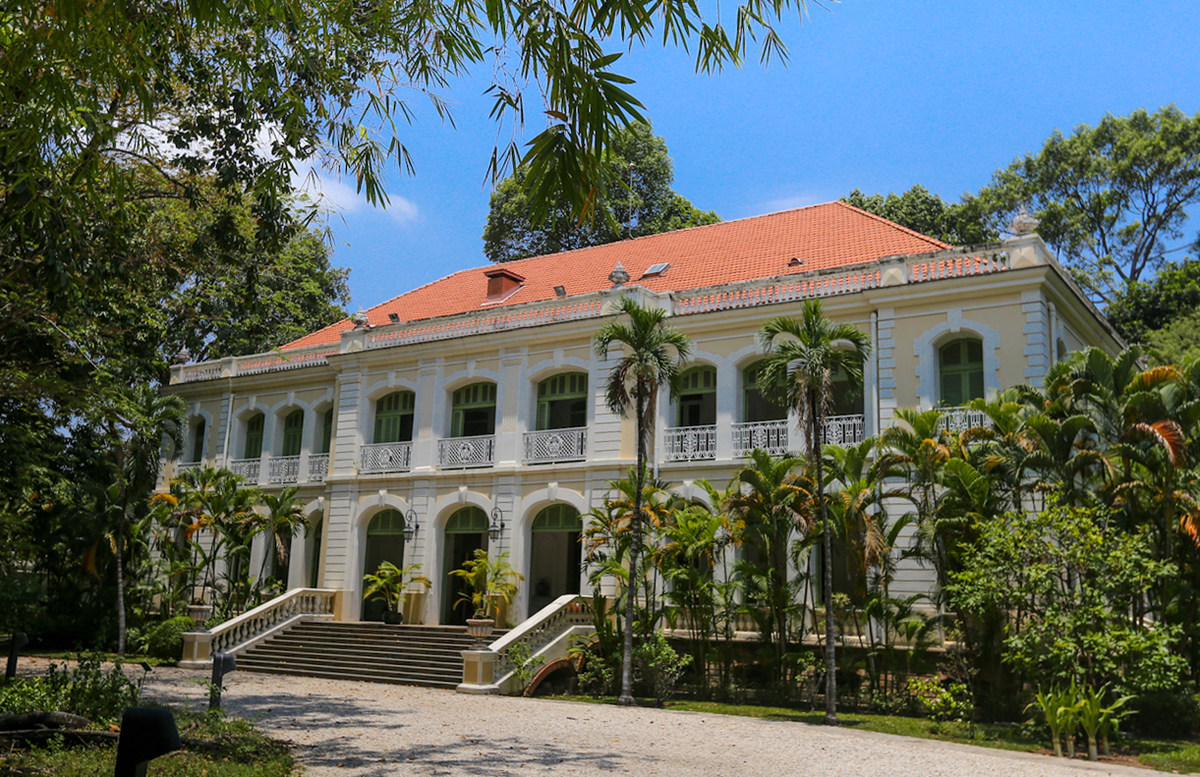Vietnam Weather Overview
Vietnam belongs to the tropical monsoon climate zone. the Northernmost point: 23 degrees 23 'North - the southernmost point: 8 degrees 34 minutes North.
The average temperature is over 21 degrees Celsius, increasing from North to South. Sunshine hours are from 1400-3000 hours / year. On average, 1m2 of territory receives over 1 million kilograms of calories. All year round our country receives plentiful of heat.
Our country is located in the Asian monsoon area, all year round influenced by seasonal moving air masses: The winter wind is cold and dry with the northeast monsoon, the summer wind is hot and humid with the southwest monsoon.
The Vietnam’s weather is divided into 3 different regions of the North - Central - South, with a length of 1,600km along the bird's way from the North to the South, in addition to the country with 3260km of coastline excluding islands. . Therefore, the weather in these 3 areas changes with each season and there is no duplication.
+ Heavy rain: average from 1500 - 2000 mm / year
+ Rainfall is unevenly distributed
+ High humidity: 80%.
The North
The highlight of this area is Hanoi, which is the capital city of Vietnam, leaving many historical imprints of the Vietnamese people. In addition, there are famous places here such as Ha Long Bay, Sapa, Ha Giang stone plateau ...
The Central of Vietnam
This is the place where many of the most beautiful beaches in the country are gathered, blue stream of water will give you the pleasure of reality experiencing here. Hue ancient capital is the highlight of the Central Vietnam, this is the place where the last feudal dynasty of Vietnam collapsed in 1945, a place to preserve the traditional culture of the ancient Vietnamese. The Central Highlands region will give visitors peace when the weather is very fresh and warm. There are also other places such as Hoi An, Nha Trang, Da Nang ...
The South
Ho Chi Minh City is the cultural and economic center of South Vietnam, where many cultures of the region in the country gather here, the rapid development of the economy has made this city attract lots of international tourists. Meanwhile, the provinces in the Mekong Delta area will let visitors learn more about Southern culture, with international dishes and specialties. Phu Quoc island emerged as a new high-class tourist center, with a huge investment, this island became one of the islands with lots of international visitors. You can also go to other places such as Mekong Delta Region, Binh Thuan, Ninh Thuan ...
Vietnam’s weather throughout the year
Because of being located in the region of the monsoon climate zone, 3 regions of Vietnam have completely different weather, the North has 4 distinct seasons, the South and the Central only have 2 seasons: sunny and rainy seasons.
The North
Spring from January to March
In January, the North will have the right amount of sunshine, there is fog in the early morning and gradually decrease when the sun rises, the average temperature is 18 degrees Celsius. The weather is in the Spring so the temperature will drop especially in the coastal provinces, there is snow in the hilly areas. In February and March, the temperature will drop slightly at night with an average temperature of 17 degrees C.
Summer from April to June
This is the time of hot sunshine throughout the North, the average temperature is over 26 degrees Celsius, the hot and humid temperature makes up the majority, the rainfall is low and almost no rain in the mountainous provinces. However, the temperature in the highlands like Ha Giang, Sapa temperatures remaines stable and the weather is pleasant. In May, the temperature suddenly increase to 29 degrees Celsius, it is hot, there is no rain. In June, the temperature remain high, it begin to rain lightly, high humidity, the mountainous provinces have heavy rain.
Fall is from July to September
The weather in this season is very hot in the North, the temperature is over 30 degrees Celsius, the humidity is over 80%, visitors shouldn’t go climbing because of the high humidity easily causing danger. This is really a bad season for tourism in the North, when tropical storms and rain are prolonged, causing hot weather, it’s not a good idea to climb and move to the highlands.
Winter is from October to December
At the beginning of October, it was during the middle of the season between Autumn and Winter, the temperature dropps to 28 degrees Celsius, but it is still hot in coastal areas, the humidity stabilizes again, but it is not a good idea to climb mountain this month because the weather is still not really good. November and December are the best time for sightseeing and climbing in Ha Giang and Sapa, the weather returns to normal when the temperature reaches 26 degrees Celsius, humidity 80%. The weather in Hanoi and surrounding areas is cool and pleasant.
The Central of Vietnam
Sunny season is from January to June
The average temperature is at 23 degrees Celsius, the temperature gradually decreases at night, the mountainous areas such as Da Lat, Gia Lai, Dak Lak will drop below 20 degrees Celsius. The rainfall in this area decreases gradually, and almost no rain. In February and March, the temperature gradually increases, indicating that summer has come. The temperature has gradually increased, the temperature reached to 25 degrees Celsius, sometimes up to 28 degrees C. Visitors can go to the beaches of Danang, Hoi An to enjoy early morning sunshine before the temperature increases. In May and June, it is the hottest time and there is almost no rain, the coastal provinces have a temperature of 30 degrees Celsius, the Central Highlands area start to rain but the rainfall is negligible.
Rainy season is from July to December
At the beginning of July, the average temperature reached 31 degrees Celsius, the Central Highlands region start to have rain and rainfall increased, the exploration of mountainous areas in the Central Highlands was impossible. The coastal provinces have pleasant weathersuch as Hue, Da Nang, Hoi An, ... with warm weather, suitable for swimming and enjoying seafood. In the end of July to the end of August, it starts raining throughout the southern provinces. Hoi An and Da Nang are still the ideal places to visit, but sometimes showers suddenly appear, so moving by boat is not a good idea. In October and November, the rainfall reaches the highest level, average temperatures from 24 to 27 degrees Celsius, heavy rain accompanied by flash floods so sightseeing trains may be canceled due to heavy storms, while the Highland area has a decreasing rainfall, especially at the end of the month. In November and December, rainfall gradually decreases, however, there are still storms, in the coastal provinces, the Central Highlands no longer rains. In Da Lat, Gia Lai, and Kom Tum the weather is warm again, it is a good condition for climbing moutain trips.
The South
Rainy season is from January to June
Climate this month is the best condition for visitors who want to learn about Ho Chi Minh City, the average temperature is 26 degrees Celsius with blue sky, light sunshine, no rain. In February, the temperature changes but not significantly, the average temperature is 27 degrees Celsius. The beaches in Phan Thiet are a suitable place to relax this month. In March and April, the temperature in the South begins to heat up, Ho Chi Minh City will have an average temperature of 31 degrees Celsius, little rainfall and almost no rain when moving to the south. In May, the temperature gradually decreased, it is cool in the afternoon, small rains appeared, humidity is over 80%, rain appeares in the evening, June is officially the rainy season of the South, more rain starts. Ho Chi Minh City unexpectedly rains, the temperature is 28 degrees Celsius, it is cool and not sunny much.
Sunny season is from July to December
Rain still remains average in July but will decrease gradually at the end of month. In August the temperature is stable at 28 degrees Celsius, the humidity maintains 80%. In September, the rainfall decreased significantly, the temperature increased to 29 degrees Celsius, the outdoor activities were preferred, moving to the western provinces with cool weather, the average temperature of 28 degrees Celsius, without rain, with light and cool breeze wind. In November, rain no longer appears, blue sky, warm sunshine, Phan Thiet's tourist beaches attract tourists. Visitors can explore Ho Chi Minh City by public transport and enjoy the cool weather of South Vietnam. In December, the temperature returned to normal as January, temperature is at 26 degrees Celsius, this is a favorable condition to visit famous places of Ho Chi Minh City, Phan Thiet, Phu Quoc ...
Source: e.vnexpress.net
